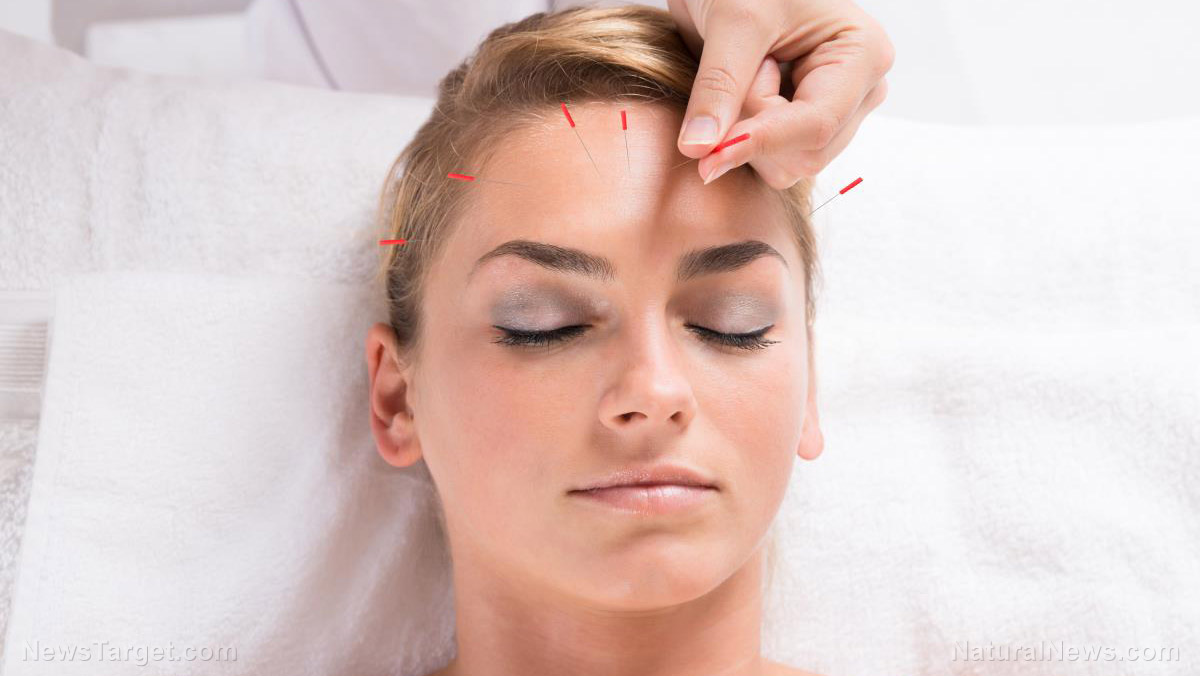Researchers determine local acupuncture needling is important for treating peripheral neuropathy successfully
09/02/2019 / By Edsel Cook

Researchers recently found a connection between local acupuncture points and the peripheral nerves involved in neuropathy and neuropathic pain. They concluded that stimulating those local points with needles ensures the successful treatment of peripheral neuropathy.
Numerous studies show that acupuncture improves medical conditions like chronic lower back pain, migraine and tension headaches, and chemotherapy-related nausea and vomiting. Understandably, researchers decided to apply the traditional Chinese medicine to peripheral neuropathy cases.
Peripheral neuropathy encompasses all injuries sustained by the peripheral nervous system due to a dysfunction or primary lesion. Examples include mononeuropathy – in which a single nerve is injured – and polyneuropathy, which involves multiple nerve injuries.
In 2017, researchers from the Oregon Health & Science University (OHSU) reviewed various studies on the use of acupuncture to treat peripheral neuropathy and its symptoms. They noted that successful randomized controlled trials concentrated on acupuncture points closely associated with specific peripheral nerves.
The researchers decided to follow-up on these results by investigating the importance of acupuncture points selection for neuropathy therapy. (Related: Can acupuncture be used to treat peripheral neuropathy?)
Figuring out the peripheral nerves that respond to acupuncture treatment of neuropathy cases
Acupuncture practitioners and researchers have long been working on a neuro-anatomical theory that connects specific acupuncture points to peripheral nerves, spinal plexuses, and spinal segments. They suggest that acupuncture exerts its effects by stimulating parts of the peripheral nervous system.

When peripheral nerves are activated, they trigger a response somewhere along the spinal cord. In turn, the spine sends signals to the visceral organs and skeletal muscles.
The OHSU researchers felt that exploring the choice of acupuncture points in successful peripheral neuropathy treatments might shed more light on the link between needle placement and the effects of acupuncture on associated nerves.
They reviewed 13 randomized, controlled trials involving acupuncture treatments for neuropathy caused by Bells’ palsy, carpal tunnel syndrome, diabetes, human immunodeficiency virus, and idiopathic causes.
The researchers took note of the acupuncture points that were used for the treatment and concentrated on the points that alleviated the neuropathic condition.
They used the data to create anatomical diagrams that highlighted the relationships between acupuncture points and peripheral nerves.
They also discussed the role of each acupuncture point in traditional Chinese medicine, including the indications for their use. Finally, they discussed the underlying nerves that responded the most when certain acupuncture points were stimulated.
Peripheral neuropathy cases respond best to local acupuncture points
Their reexamination succeeded in identifying the specific peripheral nerves linked to the acupuncture points prescribed for certain diseases. For patients with Bell’s palsy, most of the points used to treat the neuropathy are linked to the ipsilateral facial nerve.
The acupuncture points for treating carpal tunnel syndrome affect the median nerve and its branches. The median nerve passes through the carpal tunnel.
Finally, the OHSU researchers noted that most of the points used for polyneuropathy activate the nearest peripheral nerves. This finding applies to neuropathy cases caused by diabetes, HIV, and idiopathic causes.
Given their findings, they concluded that applying acupuncture needles to “local points” produces the best results for peripheral neuropathy cases.
The researchers believe that their findings can help acupuncture practitioners in picking the best acupuncture points for treating neuropathy. For mononeuropathy cases, they recommended needling points located right beside the affected nerve.
Polyneuropathy cases, on the other hand, require more than one point to be stimulated. Acupuncture needles should also be placed very close to large peripheral nerves.
The structural approach devised by the OHSU researchers may serve as a guide or basis for a standardized acupuncture treatment protocol for peripheral neuropathy. It follows the neuro-anatomical model and effectively alleviates neuropathy regardless of its origin.
Sources include:
Submit a correction >>
Tagged Under:
acupuncture, alternative medicine, alternative treatments, Bell's palsy, Carpal tunnel syndrome, diabetes, disease treatment, disease treatments, HIV, mononeuropathy, natural cures, natural medicine, Naturopathy, nervous system, neuropathic pain, neuropathy, pain relief, peripheral nerves, peripheral neuropathy, polyneuropathy, research, TCM, traditional Chinese medicine
This article may contain statements that reflect the opinion of the author





















